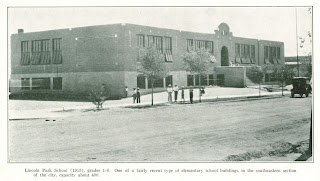Food Insecurity in El Paso and Doña And Counties
Many, Especially Children are Food Insecure in El Paso and Dona Ana County
Share
Doña Ana County
Many, Especially Children are Food Insecure in El Paso and Dona Ana County
Share
Feeding America has recently posted an interactive map that shows the level of food insecurity state by state and county by county. Their website states:
"Feeding America undertook the Map the Meal Gap project...to learn more about the face of hunger at the local community level. In August, 2011...child food insecurity data was added. This map reflects 2009 data; updates to include the recently released 2010 USDA and Census Bureau data will be incorporated in early 2012. "
Click here to view Feeding America's Food Insecurity Map.
Some definitions first:
Food insecurity: A condition assessed in the Current Population Survey and represented in USDA food security reports. It is a household-level economic and social condition of limited or uncertain access to adequate food.
SNAP threshold: A dollar amount (based on a percent of the poverty level) at which a household’s income is deemed too high to be eligible for the Supplemental Nutrition Assistance Program (SNAP, formerly the Food Stamp Program). Income eligibility is one aspect of eligibility, which also includes assets. These income thresholds and other eligibility tests vary by state.
Texas
The Food Insecurity Rate for the State of Texas is at 17.8% with 4,245,970 people food insecure.
- 61% of those in Texas who are Food Insecure are below the SNAP threshold of 165% poverty.
- 8% of those are between 165-185% poverty
- 31% of those are above other nutrition pgm thresholds of 185% poverty
Feeding America estimates that Texas needed an additional $1,673,903,770 to meet food needed in 2009. The average cost of a meal in Texas was $2.36.
Texas Children
The Child Food Insecurity Rate in Texas is 28.2% with 1,871,660 children who are Food Insecure. In looking at program eligibility among food insecure children:
- 67% of those Food Insecure children are income-eligible for nutrition programs (incomes at or below 185% of poverty)
- 33% of those Food Insecure children are likely ineligible for federal nutrition programs (incomes above 185% of poverty)
El Paso County
El Paso has a rate of 20.3% Food Insecurity with an estimated 147,750 with Food Insecurity. Within those who are Food Insecure in El Paso County:
- 83% of those Food Insecure are below the SNAP threshold of 165% poverty
- 10% of those are between 165%-185% poverty
- 7% of those are above the threshold of 185% poverty
- 68% of those are income-eligible for nutrition programs (incomes at or below 185% of poverty)
- 33% of those are likely ineligible for federal nutrition programs (incomes above 185% of poverty)
Child Food Insecurity in El Paso County
El Paso has a 37.6% Child Food Insecurity rate with 86,390 children who are Food Insecure.
- 68% of those Food Insecure children are income-eligible for nutrition programs (incomes at or below 185% of poverty)
- 33% of those Food Insecure children are likely ineligible for federal nutrition programs (incomes above 185% of poverty)
New Mexico
New Mexico has a food Insecurity rate of 17.1% with 336,430 food insecure.
- 55% of those food insecure are below the SNAP threshold of 130% poverty
- 18% of those food insecure are between 130-185% poverty
- 27% of those food insecure are above other nutrition pgm threshold of 185% poverty
Child Food Insecurity in New Mexico
New Mexico has a Child Food Insecurity rate of 27.3% with 137,720 child who are food insecure
- 73% of those Food Insecure children are income-eligible for nutrition programs (incomes at or below 185% of poverty)
- 27% of those Food Insecure children are likely ineligible for federal nutrition programs (incomes above 185% of poverty)
Child Food Insecurity in Dona Aña County
Doña Ana County
Doña Ana County has a Food Insecurity rate of 18.4% with 36,460 people who are food insecure.
- Of these 67% are below the SNAP threshold of 130% poverty
- 22% of those food insecure are between 130-185% poverty
- 11% of those food insecure are above other nutrition pgm threshold of 185% poverty
Child Insecurity in Dona Ana County
Doña Ana County has a 31.8% Child Food Insecurity Rate with 17,490 Food Insecure Children.
- 79% of those Food Insecure children are income-eligible for nutrition programs (incomes at or below 185% of poverty)
- 22% of those Food Insecure children are likely ineligible for federal nutrition programs (incomes above 185% of poverty)














